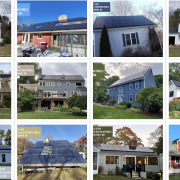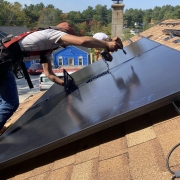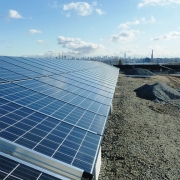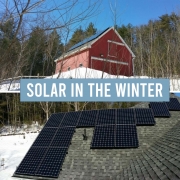Colby’s 5,300-Panel Solar Field Ready to Generate Power – and Academic Opportunity
By Caitlin Rogers
July 6, 2017
Read the original article Here
Colby will flip the switch on a nine-acre solar field this fall, the latest step in the College’s commitment to sustainable and climate-friendly practices. The new 1.9-megawatt photovoltaic energy project, announced last May, will supply about 16 percent of the College’s electricity.
Colby declared carbon neutrality in 2013 and continues to work to reduce carbon emissions.
“Colby takes a holistic approach,” said Mina Amundsen, assistant vice president for facilities and campus planning. “We are always looking for the next way to promote sustainable practices.”
The project, undertaken in collaboration with NRG Energy, Inc., is located less than one mile from campus on a large, easily accessible, south-facing space to maximize the project’s capacity for power production. Approximately 5,300 solar panels will be installed to produce 2.5 million kilowatt hours of electricity per year.
This solar array is the latest in a series of sustainable energy projects implemented by the College. Colby already has a photovoltaic energy system on the roof of the Schair-Swenson-Watson Alumni Center that generates around 10 percent of its electricity from a steam plant on campus.
The biomass plant, booted up in 2012, saves a million gallons of oil annually by burning locally sourced forestry scraps to produce heat. Additionally, 15 of Colby’s spaces are LEED certified, and Colby is committed to seeking LEED certification—which indicates commitment to human and environmental health in its design and construction—on all new building projects.
Amundsen said Colby’s commitment to the environment includes not only sustainable energy, but also sustainable water, materials, waste, and consumption. Colby was only the fourth college or university in the country to become carbon neutral when it reached that milestone about two years ahead of schedule.
For more than a decade, Colby students have intensively studied environmental practices on campus and participated in sustainability projects; the campus’ first greenhouse gas inventory became an honors thesis in 2007.
The solar array provides another valuable learning opportunity for students, who will be able to study the system itself and the environment around it.









